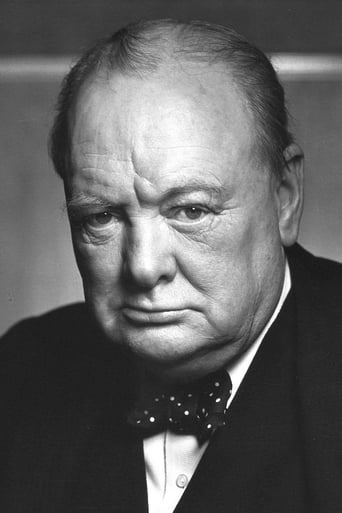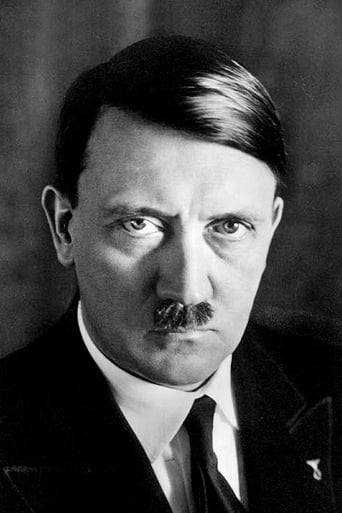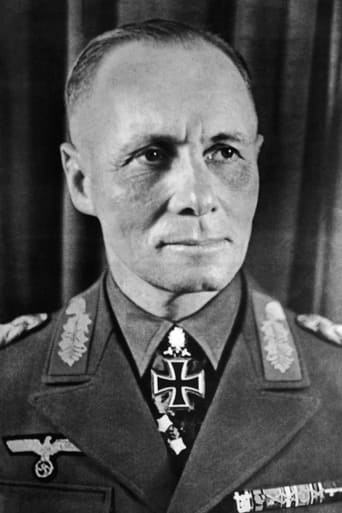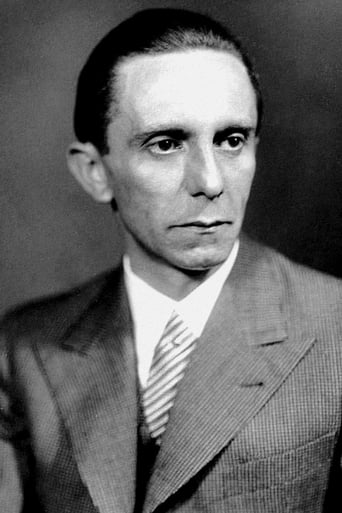Robert J. Maxwell
By 1943, the German Field Marshall Rommel had pushed the British forces under Auchinleck back to within 60 miles of Alexandria, Egypt. Auchinleck was relieved by Generals Alexander and Montgomery, who dug in, and then successfully counter-attacked at El Alamein, saving Egypt from German and Italian conquest.Not that most of the Italians were a great threat. Their leadership was poor, for one thing. And they were held in contempt by their Afrika Korps counterparts. One of the Italian generals was Ettore Bastico, to whom Rommel referred as "Bombastico." Their equipment was outdated and poor. Many weren't overly fond of Mussolini and his aggressive foreign policy and his eager affiliation with Hitler's Germany. For these and other reasons, their team spirit was on the low side and the British and Commonwealth troops swept them up by the thousands.I mention this because the actual movements of the various forces are described well enough in another review, so there's not much point in describing them again.It's a war time propaganda movie and very well done for what it is. Propaganda itself is interesting because it's possible to mislead without actively lying. For example, we don't see or hear anything in this film that is untrue in any strict sense of the word. But what's interesting is what ISN'T said or seen.One of the principal reasons Rommel lost the battle of El Alamein is that he was at the very end of his supply line. He simply ran out of stuff. He was outnumbered in tanks, supplies, and combat-ready troops. He was out of fuel. He abandoned some operational tanks by draining their fuel in order to keep other tanks moving.And the reason for this was that the thread of his supply line ran from Italy to Tripoli, hundreds of miles by sea, and then still more hundreds of miles over the single coastal road. The coastal road was vulnerable to air attack. The convoys were vulnerable to attack both by air and submarine and shipping was regularly sunk, so that Rommel had almost nothing to replace his losses.And one of the chief reasons for THIS is that the British had broken the Italian naval code and knew roughly when and where the convoys would be at any given time. Of course, this couldn't even be hinted at in a 1943 documentary. Secrecy was so important that an air attack on a ship could not be called off, even though at the last moment it was discovered that the ship carried Allied POWs.And Rommel's retreat from El Alamein was not a rout, it was orderly. As he was driven back to his own ports, Rommel was able to replace some of his supplies, and he went on to turn his retreat from the east into an attack on American and British troops in the West.But you can't have this sort of information in a documentary made during the conflict itself. The élan, which the Italian troops lacked, had to be kept up at home and in the field.The print I saw was in pretty bad shape. The narrative was relevant and informative, although sometimes five minutes would pass during which we see many guns and tanks and troops dashing around but the narrator tells us nothing about what we're watching. Some of the footage obviously doesn't match the narrative closely but if you're not a purist you won't mind. The graphics are very helpful.Now that the shouting is all over, there is a more balanced and orderly presentation of these incidents available on the "Battlefield" series of DVDs. The boxed set of DVDs contains El Alamein, North Africa, and the Mediterranean.
scnzSteve
This documentary account of the victorious campaign in Egypt and Northern Africa is nearly 100% actual war footage. In the inimitable British tradition it is factual, not propaganda-based (although some emotive wording can be found in the commentary). The Brits are to be commended for making a film of the campaign so quickly (1943) so that the public were able to unravel what really happened and what part they, their friends & relatives might have played in supporting the effort. Highly motivational stuff. Superb footage of all the protagonists, including Montgomery, Churchill, & Rommel (captured German footage!) etc. For authenticity this would be as near as possible to faultless. A great story and one that deserves to be re-told. The film is just over an hour in length, and does not drag at all. Recommended for anyone interested in World War 2 or in great land battles.
smiley-39
Before the Battle of Alamein reached its crescendo, and before the victorious finale in Tripoli, there was a long drawn out overture which lasted from June 1940 to October 1942. It was to turn this campaign into something unique in World War Two.A featureless land fit only for war, as the narrator, J. L. Hodson stated in the early scenes. "If war was to be fought then let it begin here". In endless miles of rock-strewn scrub desert, where civilians hardly existed. If chivalry existed in war, then chivalry was here also; as the veterans on both sides claimed. This was the only campaign were a spirit of comradeship and respect existed between the opposing armies. They even shared the same popular song, "Lili Marlene".How did soldiers cope with the desert conditions? The men of the Afrika Korps coped well enough. They were a highly disciplined obedient product of the world's most professional military establishment. The Italians, it is said, brought along their comfort women to make life a little easier. To British and Commonwealth soldiers desert fighting was an old story. Anglo-Egyptian Sudan in the 19th Century, Jordan, Palestine, Mesopotamia (now Iraq), in the 20th Century. They took it in their stride.From 1940 to 1942 this campaign swung back and forth between El Alamein in Egypt and westward to El Agheila in Cyrenaica. Under General Wavell, General O'Connor a daring and imaginative commander, succeeded in destroying a large part of the Italian forces in Libya at Beda Fomm, in December 1940. February 1941 the Afrika Korps arrived on the scene commanded by General Erwin Rommel. A bold and highly respected soldier indeed. The Afrika Korps was about to become famous and show its ability.In Britain unknown desert place names became famous. Benghazi, Gazala, Bardia, Mersa Matruh, and Tobruk.By July 1942 Rommel's successes had run there course. His long supply lines from Italy via Tripoli were harassed by the Royal Navy, RAF and commonwealth squadrons. He was stopped in his tracks a short distance west of the railway stop at El Alamein, a location that was to win a roomy place in British military history. Tobruk under a second siege had fallen to Rommel. General Auchinleck relieved General Ritchie and took command in the field himself.Tobruk's fall was a blow to Churchill. He decided that new blood should conduct operations. He wanted to appoint General Sir Henry Maitland "Jumbo" Wilson. He also favoured Lieutenant General Richard "Straffer" Gott. But Gott's luck ran out; killed when flying in a Air Force transport aircraft shot down by the Luftwaffe. General Sir Alan Brooke suggested Montgomery. Churchill concurred. An unknown man outside army circles Lieutenant General Sir Bernard Law Montgomery was a man dedicated to the profession of arms; a soldier to the marrow in his bones. Montgomery's CinC would be General Sir Harold Alexander. An officer and a gentleman to his fingertips if ever there was one. For effect Monty, as he became known, wore a wide-brimmed Australian slouch hat which displayed a number of regimental and commonwealth badges. He ruthlessly fired senior subordinates who did not "measure up". He courted the correspondents. Putting them, "in the picture". Monty would, "...clear this chap Rommel out of Africa once and for all". Thus spoke the British Army's greatest self-publicist! The scribes lapped it up. Monty's self confidence seemed a dangerous weapon in itself.Rommel decided to strike at the Eighth Army's defensive line which ran forty miles from the coast southwards to the Qattara Depression. Montgomery was building up Eighth's strength at the time. It was called the Battle of Alam Halfa. With air support the ground forces hit back hard. Rommel withdrew.The offensive at Alamein opened up with a heavy artillery barrage. After twelve days of bitter fighting coupled with ceaseless air attacks by the RAF the Afrika Korps commenced the long retreat from Egypt into Cyrenaica, across Tripolitania, through the Libyan capitol, Tripoli, and into Tunisia. So after two years of a long hard slog the Eighth Army was on a winning streak. Fortune smiled upon the soldier's faces. In the minds of the British people, fed up with defeat and starved of victory, the BBC radio announcement was a delightful shock to the system. At last they had something to cheer about. As the young woman stated in the film, "There's plenty more where that comes from". There was indeed.In Tripoli, the show place of Mussolini's much vaunted African Empire this documentary ends. Mister Churchill took the salute of the Eighth Army veterans. The Master of Ceremonies? Monty of course, brilliant but insufferable, wearing the now-famous black beret, displaying a general's cap badge and the badge of the Royal Armoured Corps. The victory parade was symbolic in another way. For this long bitterly fought campaign was Britain's imperial swan song. From now on, America would take an increasingly leading role in this worldwide conflict.Apart from the British divisions there were also Australian, New Zealand, South African, and Indian divisions. And those brave little warriors from Nepal, the fearless Gurkhas. And here in this desert wastes was born the legendary SAS. Commonwealth commanders served the cause well. Generals Pinenaar, South Africa, Freyberg, New Zealand Morshead, and Air Vice Marshal Coningham, Australia.And what of the two, three, and four star generals? Some known, some not so well known. Some relieved by higher command. Generals, Archie Wavell, Alan Cunningham, and Claude Auchinleck, overshadowed by Harold Alexander and Bernard Montgomery. Others? Neil Ritchie, Oliver Leese, Willoughby Norrie, Herbert Lumsden, Briggs, Dorman-Smith, Godwin Austen, Gatehouse and Brian Horrocks. Some did, "measure up", and some didn't, before and after Montgomery arrived on the scene.And Field Marshal Rommel? He was recalled from North Africa. Had he fallen into Allied hands he would have avoided the July '44 plot against Hitler. Survived in Allied captivity and lived out his remaining years in retirement.





